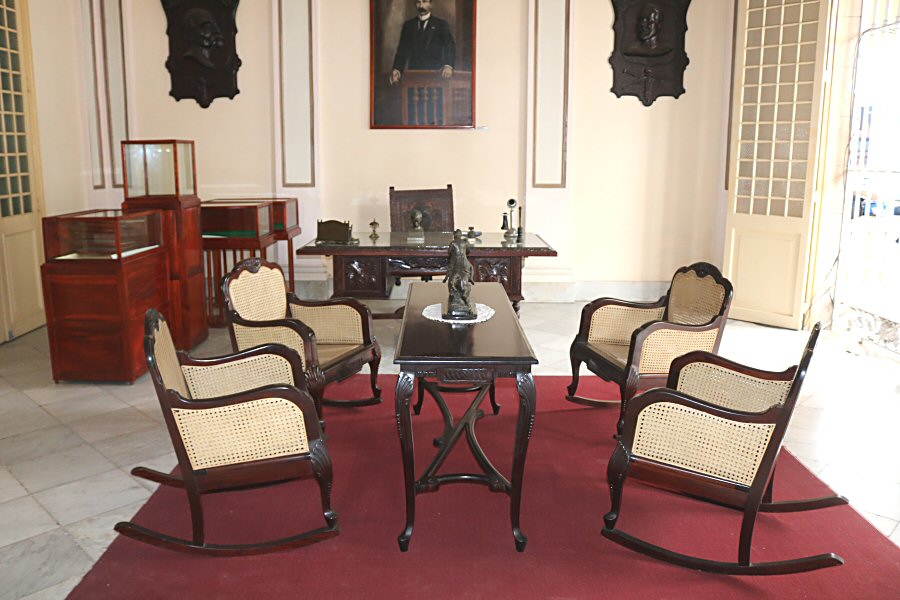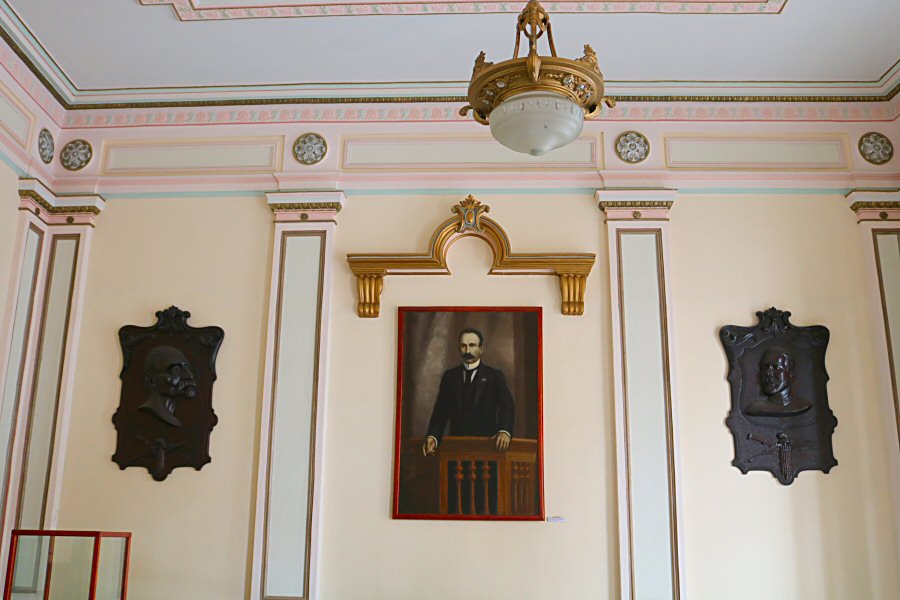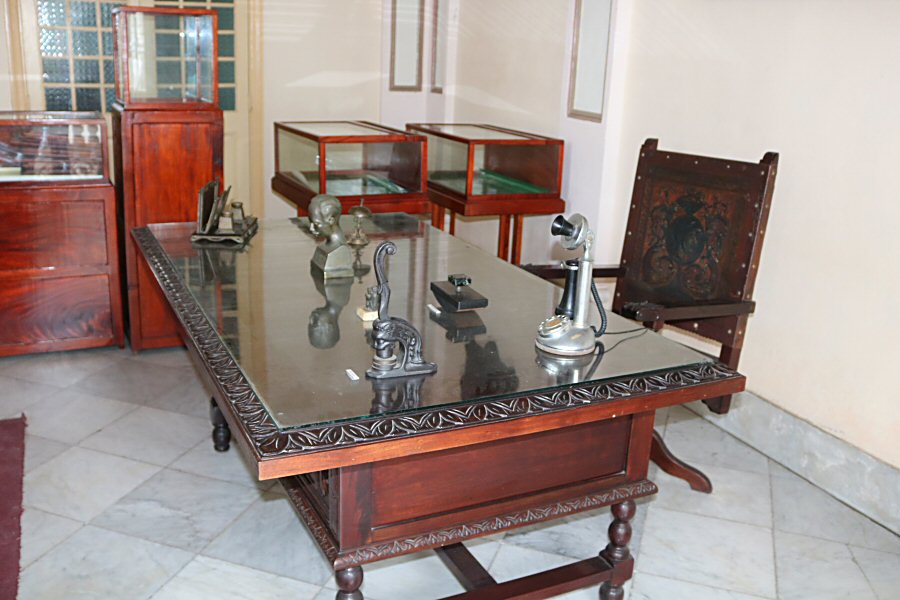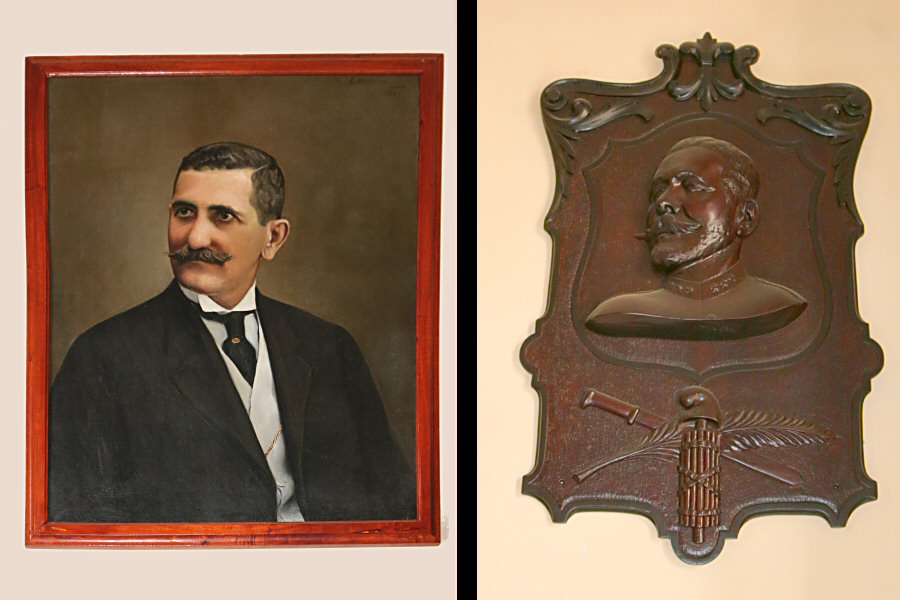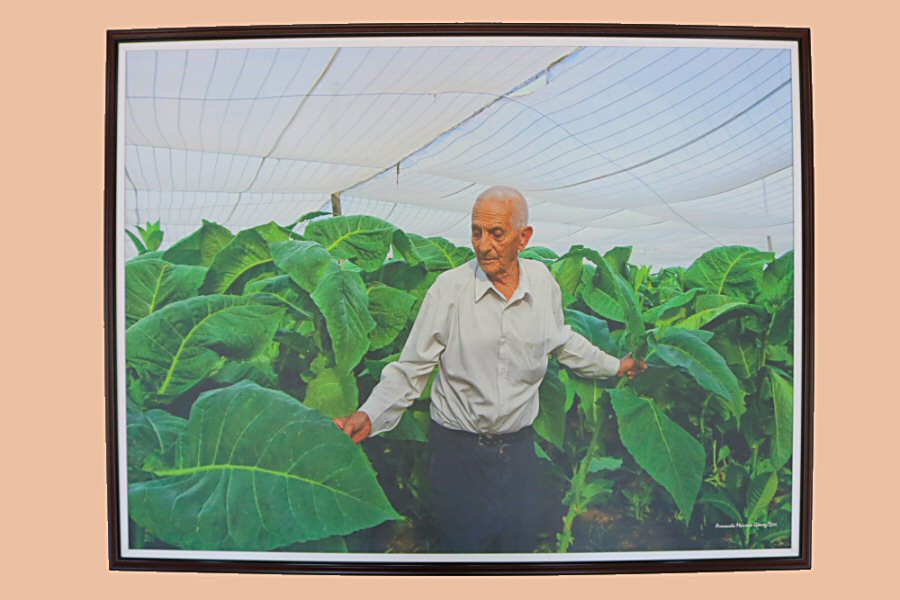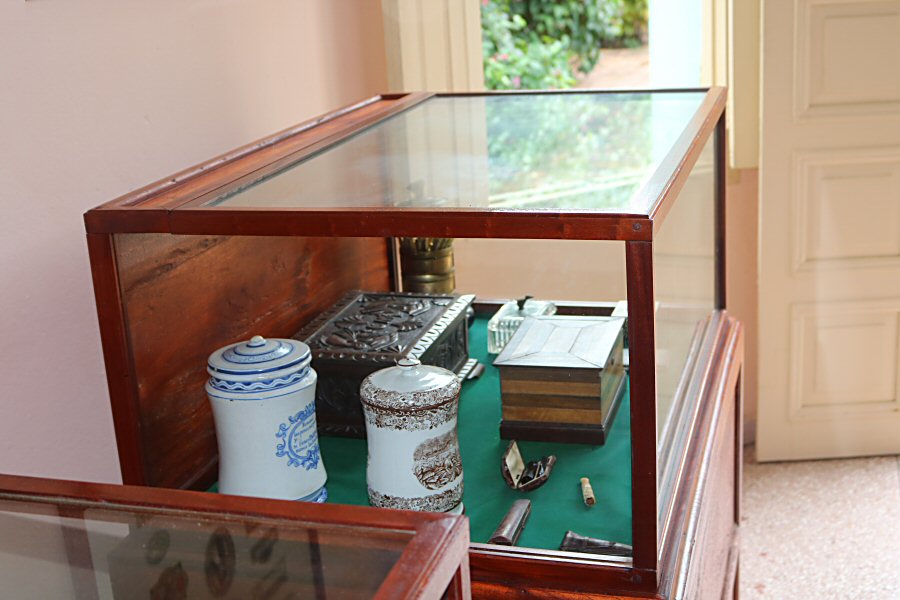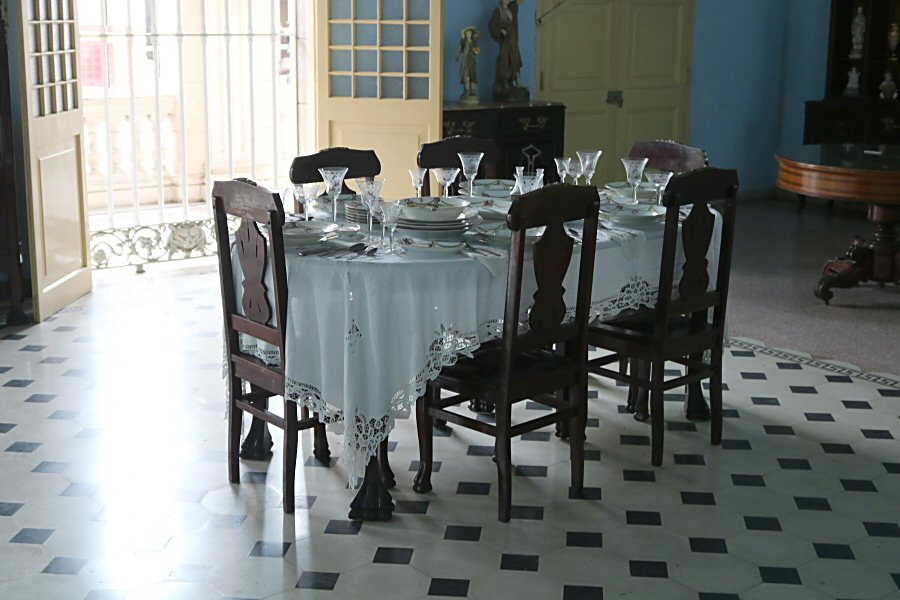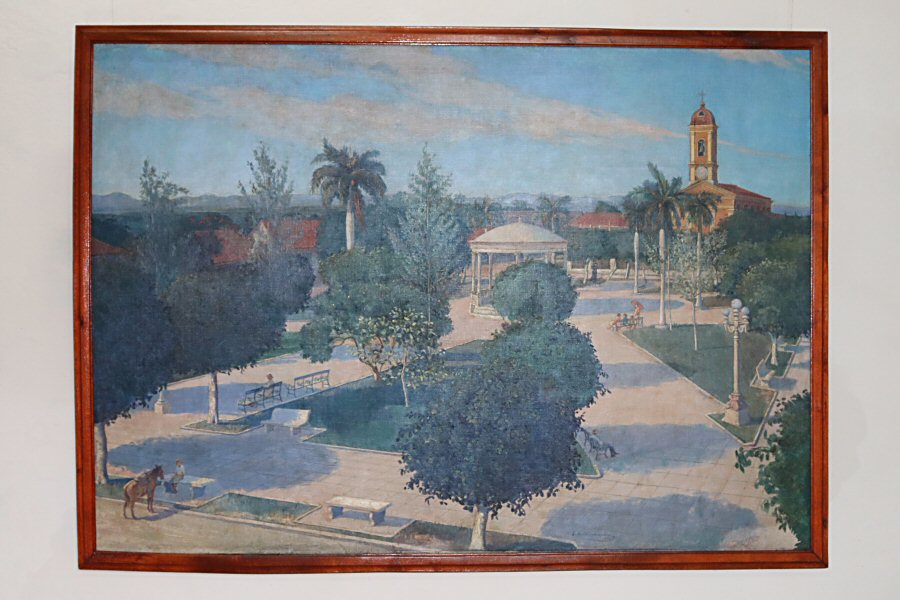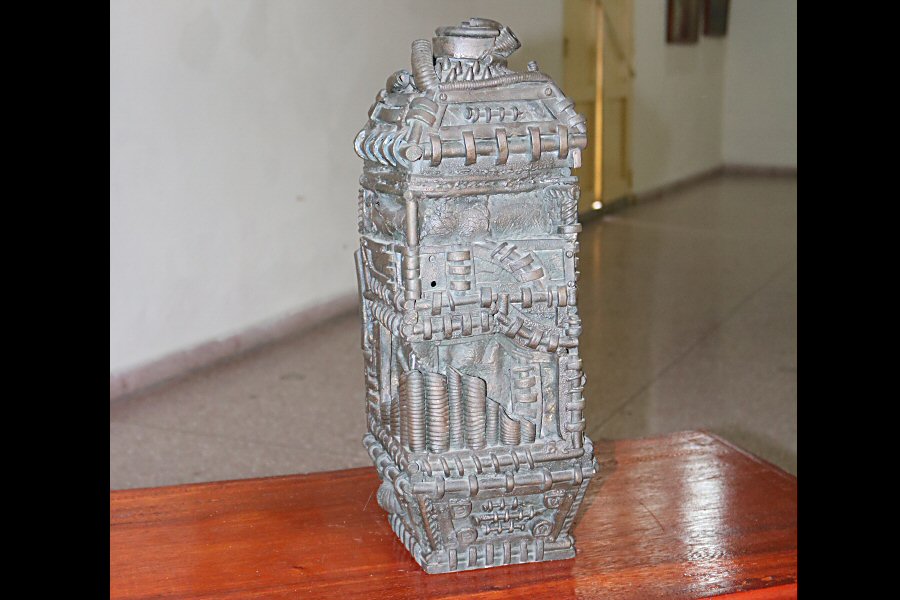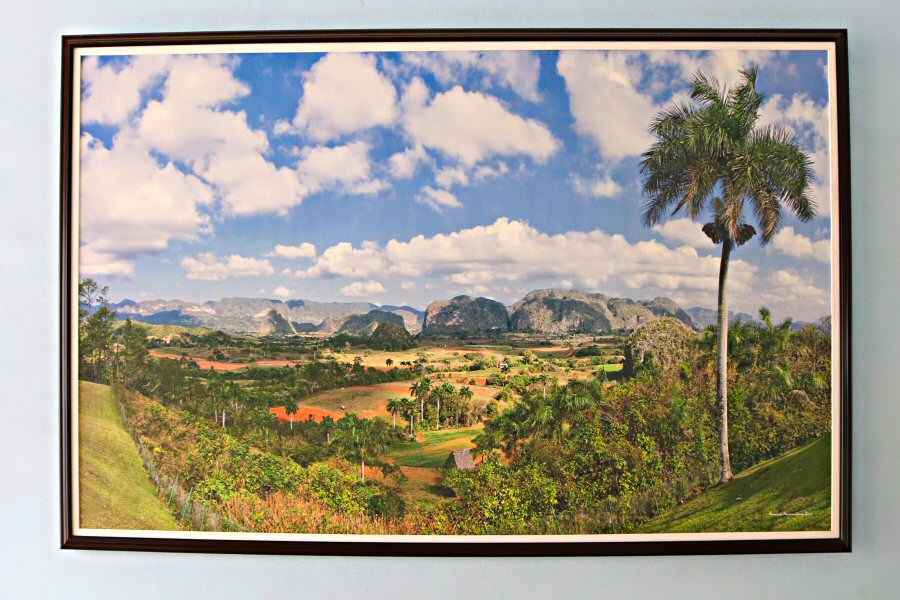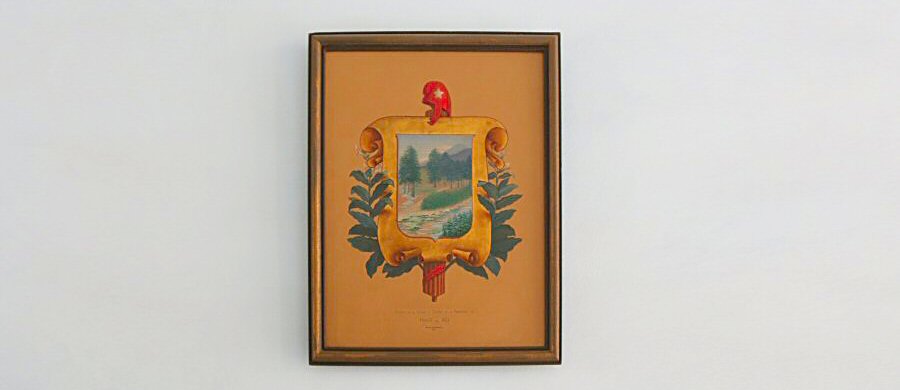The Museum
The eclectic-style building shows the Moorish influence and the
evolution of domestic architecture in the province of Pinar del
Río. It is one of the few buildings in the city that uses
limestone. Despite the modifications suffered in its more than
100 years of existence, it retains the peaceful colonial air of
the time of its conception. A large paneled door with a shutter
characterizes the entrance to the reception hall.
In the
Archeology Room, objects related to the
existence of the indigenous people who lived in this region are
exhibited. Visitors can see what people could do with stones and
seashells. Also, earrings made from seashells and fish vertebrae
are exhibited. Also, the secondary burial is highlighted.
Secondary burial is a burial, cremation, or inhumation that is
dug into a pre‐existing barrow or grave any time after its
initial construction.
The
History Room shows the economic, political
and social evolution of Pinar del Río from the colonial period
to the 1940s. Exhibited objects such as the sugar thumb molds
(the only complete examples from the 19th century in the
territory), the molding boards for making tobacco, different
types of snuffboxes, the cigar guillotines, a coffee grinder ,
tiles from old French coffee plantations, Yucatán and Creole
metates (a flat or slightly hollowed oblong stone on which
materials such as grain and cocoa are ground using a smaller
stone), among others, show the presence of Spanish and French in
the most important economic sectors such as tobacco, sugar and
coffee at that time.
Objects related with the system of slavery in Vuelta Bajo can
also be seen like the abusive shackles, and pieces related to
marooning, such as dungeon machetes, clay pots, combs, among
others, which were very abundant in the hills of Vuelta Bajo.
Additionally, you can see a collection of miniature bottles with
samples of the main productions of the legendary Guayabita del
Pinar, a drink unique to Vuelta Bajo created by Lucio Garay
Zabala in 1892.
A collection of weapons used in the war in Pinar del Rio in
1895, the oil portraits of the first three provincial governors
of the republican period and objects that were in the Government
office such as a tobacco book and a bar book are on display.
There are also objects that reflect the founding of the
Communist Party in the territory, Pinar del Río's participation
in the Spanish Civil War and the repression and punishment used
by the police and the rural guard during the 1930s and 1940s.
In the
Ambient Room a living room and dining
room are recreated to reflect the lifestyle of the middle class
in Pinar del Río during the 1940s and 1950s. In Pinar del Río,
living room and dining room furniture was used only for its
utilitarian value, since the purchasing power of the wealthy
class in the province did not allow the transport of sumptuous
style furniture. Therefore, the most commonly used furniture was
that of the Spanish and Italian Renaissance, which was made from
precious woods, straw and leather. The exhibition is completed
with porcelain, crystal and oil paintings.
In the
Decorative Arts Room, a wide collection
of glass of different types and colors, porcelain objects, a
beautiful collection of wall plates, trays decorated with the
wings of butterflies are displayed which are of great artistic
value. Oil paintings by Pinar del Rio artists such as Pedro
Pablo Oliva Rodríguez and Tiburcio Lorenzo Sanchez are
noteworthy, but particularly the last canvas of the Cuban
painter Domingo Ramos, known as the Pintor del Valle de Viñales
stands out. The table given to the Marquises of Pinar del Río
attracts the attention of the visitor due to its marquetry work.
Also on display are a Louis XV style living room set and a
French Empire dining room set.
The
Pinar del Río Creators Room exhibits pieces
belonging to prominent musicians from the region, such as the
piano and a set of wicker furniture from the house of the
composer Pedro Junco Redondas, author of the world-famous song “Nosotros”,
as well as a violin and other personal items of the creator of
Cha Cha Chá, Enrique Jorrín, and the costume worn by the major
singer Miguelito Cuní, among others.
